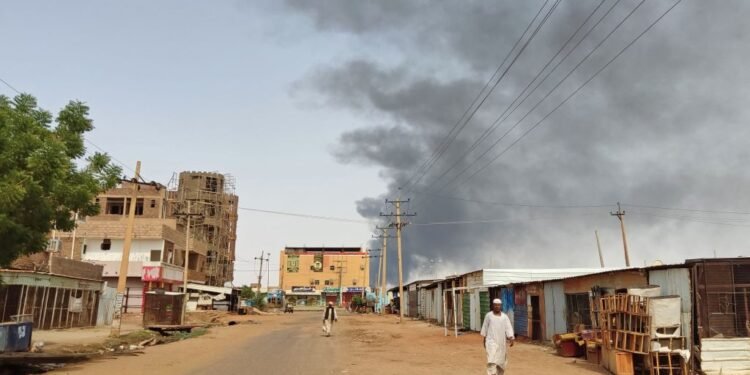ADF STAFF
The chaos that has engulfed Sudan since war broke out in April 2023 could make the country a nexus for terrorism that connects violent extremists in the Sahel with terror groups in Somalia and even Yemen, observers say.
“I really feel quite frightened about this,” Abdalla Hamdok, Sudan’s former prime minister, told the Financial Times. “With Sudan bordering seven countries, it will become fertile ground for terrorism in a region that is very fragile.”
Hamdok said a return to civilian rule is the best way to prevent terrorism from taking root in Sudan. After he took the reins of a short-lived civilian government in 2020, the international community eased decades-old terrorism-related restrictions on Sudan.
Sudan’s military leaders deposed Hamdok in 2021 as civilians were about to take control of the government as part of the transition from 30 years of rule by dictator Omar al-Bashir. Less than two years later, those military leaders — Sudanese Armed Forces (SAF) Gen. Abdel Fattah al-Burhan and Rapid Support Forces (RSF) leader Gen. Mohamed Hamdan “Hemedti” Dagalo — turned on each other.
Since then, 150,000 people have been killed, more than 10 million have fled their homes and half of the country’s 49 million residents face famine.
Sudan under al-Bashir was an extremist haven. The country hosted al-Qaida and its founder, Osama bin Laden, for many years in the 1990s before bin Laden moved to Afghanistan.
“The political conditions in Sudan in the 1990s were similar in some respects to the situation today: Sudan was riven by civil war and ruled by a military dictatorship that had only recently come to power,” analyst Suliman Baldo wrote in the Sudan War Monitor.
Sudan’s civil war has drawn the attention of extremist groups, particularly social media channels aligned with the Islamic State group (IS).
“These outlets see the violent clashes between the SAF and RSF as an opportunity to exploit the chaos and discredit its rivals, from local governments to other jihadist groups, like the Afghan Taliban,” analyst Herbert Maack wrote recently for the Jamestown Foundation.
IS encourages supporters to take weapons from the SAF and RSF and to fight to impose Shariah in Sudan, according to Maack.
After it emerged in Iraq and Syria a decade ago, IS drew hundreds of radicalized Sudanese citizens to its cause. Sudanese extremists also have joined Boko Haram in the Lake Chad region and terrorist groups in Libya. Sudanese native Bilal al-Sudani rose to a leadership position in IS’s Somali branch before he was killed in a counterterrorism action in 2023.
Sudan’s location between the Sahel and the Red Sea already has made it a logistical hub for terrorists across the region. According to the United Nations Analytical Support and Sanctions Monitoring Team, IS has financial operations in Sudan and up to 200 veteran fighters on the ground who coordinate logistics, including moving other extremists into southern Libya, Mali and beyond.
Sudan’s IS operatives recently announced on Telegram that they pledged allegiance to the organization’s new caliph, Abu Hafs al-Hashimi al-Qurayshi.
The presence of IS-aligned fighters in Sudan creates the potential that Sudanese fighters outside the country could return and boost the existing groups, expanding Sudan’s role as a bridge between terrorists in the Sahel, Somalia and even Yemen, according to Maack.
“This increases the risk of Sudan’s re-emergence as an African hub for jihadist terrorism,” Maack wrote.









